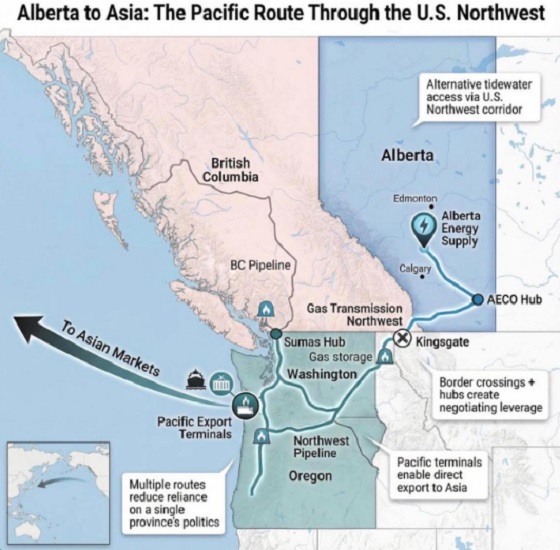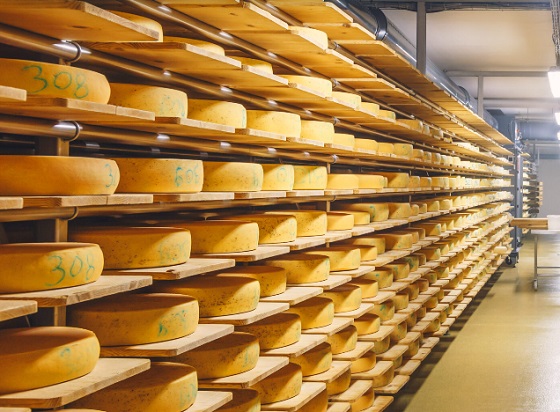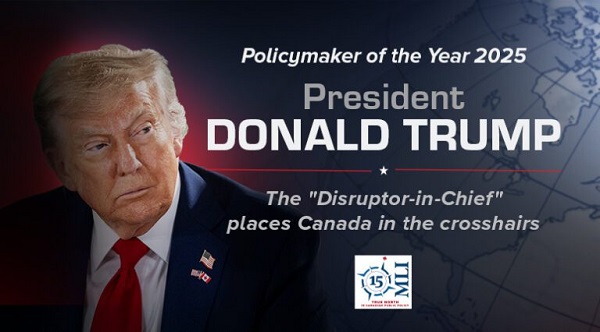Alberta
Albertans encouraged to wear cloth masks in public: easy tips and links on “How To” make your own

It is not the law, but Canada and Alberta have agreed with the idea that wearing a homemade cloth mask might help in the spreading the coronavirus, especially when it is hard to maintain the 2-metre physical distancing when in public.

YouTuber Japanese Creations offers how-to make face masks videos and tip for fogged-up glasses. Link Below
It is a culture clash between eastern and western countries. Unlike most Asian countries where a lot of the population regularly wear masks in public, in Western counties wearing a mask in public is not as easily accepted by the majority of the population. Many people find that they are treated as “infected” when they wear a face mask in public. Only time will tell if this Covid- 19 pandemic will change the majority of Canadians opinion people wear masks in public.
In February, China’s state media site posted a very strong opinion piece entitled, “Refusing Mask Wearing In Public Is A Threat To Civilization.”
Also not pulling any punches, virologist and immunologist, George Gao told ScienceMagazine.org, “The big mistake in the U.S. and Europe – is that people aren’t wearing masks. Gao is the director-general of the Chinese Center for Disease Control and Prevention, “This virus is transmitted by droplets and close contact.

George Gao
You’ve got to wear a mask, because when you speak, there are always droplets coming out of your mouth – masks, can prevent droplets that carry the virus from escaping and infecting others.” Across Asian countries the populations are onboard that, “there are an unknown number of people that are asystematic, carrying the coronavirus and they do not even know it.” So, in the spirit of a country’s solidarity, “there is a need to protect others from yourself.”
In recent weeks countries have seen the stats and cannot ignore the lower numbers of infected in mask wearing countries like, South Korea, Taiwan, Japan, Singapore, the region of Hong Kong and China has also now flatted the curve and have loosed up on the city military lock-downs.
Recently passing laws that make it mandatory to wear a face mask in public are the Czech, Slovakia, Indonesia and the Philippines. On April 3rd, US President Donald Trump, announced that the Centers for Disease Control and Prevention (CDC) is recommending, on a voluntary basis, that Americans wear “non-medical cloth” face coverings.

Making homemade masks can be a fun family craft time. If you are of age, you can even toast a glass of wine to celebrate a good job. Make extras so you can change them up, give to friends or even donate them to those in need.
In Canada Chief public health officer Dr. Theresa Tam has changed her view and is now saying, “Wearing a non-medical mask, even if you have no symptoms, is an additional measure that you can take to protect others around you in situations where physical distancing is difficult to maintain, such as in public transit or maybe in the grocery store.”
In Alberta, the view has also changed on the general public wearing mask in public. Leading off with the premier Kenney, who has seen countries that have been successful in keeping the transmission of COVID-19 down, have all had widespread use of face masks. Alberta’s Chief Medical Officer of Health, Dr. Deena Hinshaw said at a press conference, “What we know is that people who are sick spread illness – wearing a non-medical mask, such as a homemade cloth mask, has not been proven to protect the person who is wearing it,” but added, “However, it may be helpful in protecting others around you.”
The Alberta government wants people to follow these rules, even when wearing face coverings in public.
- Continue to follow all other public health guidance (staying two metres away from others, wash hands regularly, stay home when sick).
- Avoid touching your face and mask while using it.
- Wash hands before putting on a mask, then before and after removing it.
- Clean a cloth mask as soon as it gets damp or soiled.
- Put it directly in the washing machine or a sealed bag that can be emptied into the washing machine and then be disposed of.
- Cloth masks can be laundered with other items using a hot cycle, then dried in the dryer at the highest temperature setting.
- Medical masks can’t be washed and should be discarded and replaced as soon as they get damp, soiled or crumpled.
- Dispose of these masks in a lined garbage bin.
- Do not share masks with others.
There are many online resources where you can easily make a cloth mask with or without a sewing machine.
- Youtuber Danysska from the Czech republic has a very easy “How To” do instructions on how to make a cloth mask with no sewing.
- Centres for Disease Control and Prevention has a web page with easy instructions on how to make 3-different masks, one needs a sewing machine and two do not.
- With 1.5+ million views already. Japanese Creations on YouTube has two great how to videos. The second one has good tips to help glasses from fogging up, amazing what a small piece of tinfoil can do. Both do not need for a sewing machine. https://www.youtube.com/channel/UCyxl_I7lKw-bjUz3ECa_jwg

- The Surgeon General for the US, Dr. Jerome Adam has an easy to follow how to make a face mask video, with-out a sewing machine.
- From prixprix on Instructables.com with a step by step photo instructions on how to make face mask out of an old T-shirt, no sewing machine required.
- With over 1.9+ million views, HomeMadeOnOurHomestead, has a good how to sew a reusable face mask with a filter pocket.

- 1.6+ million views and counting, Thoughtful Creativity, has a tutorial on how to make cloth face masks in a batches using a sewing machine.
- Not wanting to be outdone with 1.8+ million views, Kim’s Kitchen Affair, and her DIY how to sew a reusable pleated face mask with nose bridge and filter pockets in just 5 Minutes. Some sewing skills required!
Click here to read more on Todayville Edmonton.
Alberta
What are the odds of a pipeline through the American Pacific Northwest

From Resource Works
Can we please just get on with building one through British Columbia instead?
Alberta Premier Danielle Smith is signalling she will look south if Canada cannot move quickly on a new pipeline, saying she is open to shipping oil to the Pacific via the U.S. Pacific Northwest. In a year-end interview, Smith said her “first preference” is still a new West Coast pipeline through northern British Columbia, but she is willing to look across the border if progress stalls.
“Anytime you can get to the West Coast it opens up markets to get to Asia,” she said. Smith also said her focus is building along “existing rights of way,” pointing to the shelved Northern Gateway corridor, and she said she would like a proposal submitted by May 2026.
Deadlines and strings attached
The timing matters because Ottawa and Edmonton have already signed a memorandum of understanding that backs a privately financed bitumen pipeline to a British Columbia port and sends it to the new Major Projects Office. The agreement envisages at least one million barrels a day and sets out a plan for Alberta to file an application by July 1, 2026, while governments aim to finish approvals within two years.
The bargain comes with strings. The MOU links the pipeline to the Pathways carbon capture network, and commits Alberta to strengthen its TIER system so the effective carbon credit price rises to at least 130 dollars a tonne, with details to be settled by April 1, 2026.
Shifting logistics
If Smith is floating an American outlet, it is partly because Pacific Northwest ports are already drawing Canadian exporters. Nutrien’s plan for a $1-billion terminal at Washington State’s Port of Longview highlighted how trade logistics can shift when proponents find receptive permitting lanes.
But the political terrain in Washington and Oregon is unforgiving for fossil fuel projects, even for natural gas. In 2023, federal regulators approved TC Energy’s GTN Xpress expansion over protests from environmental groups and senior officials in West Coast states, with opponents warning about safety and wildfire risk. The project would add about 150 million cubic feet per day of capacity.
A record of resistance
That decision sits inside a longer record of resistance. The anti-development activist website “DeSmog” eagerly estimated that more than 70 percent of proposed coal, oil, and gas projects in the Pacific Northwest since 2012 were defeated, often after sustained local organizing and legal challenges.
Even when a project clears regulators, economics can still kill it. Gas Outlook reported that GTN later said the expansion was “financially not viable” unless it could obtain rolled-in rates to spread costs onto other utilities, a request regulators rejected when they approved construction.
Policy direction is tightening too. Washington’s climate framework targets cutting climate pollution 95 percent by 2050, alongside “clean” transport, buildings, and power measures that push electrification. Recent state actions described by MRSC summaries and NRDC notes reinforce that direction, including moves to help utilities plan a transition away from gas.
Oregon is moving in the same direction. Gov. Tina Kotek issued an executive order directing agencies to move faster on clean energy permitting and grid connections, tied to targets of cutting emissions 50 percent by 2035 and 90 percent by 2050, the Capital Chronicle reported.
For Smith, the U.S. corridor talk may be leverage, but it also underscores a risk, the alternative could be tougher than the Canadian fight she is already waging. The surest way to snuff out speculation is to make it unnecessary by advancing a Canadian project now that the political deal is signed. As Resource Works argued after the MOU, the remaining uncertainty sits with private industry and whether it will finally build, rather than keep testing hypothetical routes.
Resource Works News
Alberta
Alberta Next Panel calls to reform how Canada works

From the Fraser Institute
By Tegan Hill
The Alberta Next Panel, tasked with advising the Smith government on how the province can better protect its interests and defend its economy, has officially released its report. Two of its key recommendations—to hold a referendum on Alberta leaving the Canada Pension Plan, and to create a commission to review programs like equalization—could lead to meaningful changes to Canada’s system of fiscal federalism (i.e. the financial relationship between Ottawa and the provinces).
The panel stemmed from a growing sense of unfairness in Alberta. From 2007 to 2022, Albertans’ net contribution to federal finances (total federal taxes paid by Albertans minus federal money spent or transferred to Albertans) was $244.6 billion—more than five times the net contribution from British Columbians or Ontarians (the only other two net contributors). This money from Albertans helps keep taxes lower and fund government services in other provinces. Yet Ottawa continues to impose federal regulations, which disproportionately and negatively impact Alberta’s energy industry.
Albertans were growing tired of this unbalanced relationship. According to a poll by the Angus Reid Institute, nearly half of Albertans believe they get a “raw deal”—that is, they give more than they get—being part of Canada. The Alberta Next Panel survey found that 59 per cent of Albertans believe the federal transfer and equalization system is unfair to Alberta. And a ThinkHQ survey found that more than seven in 10 Albertans feel that federal policies over the past several years hurt their quality of life.
As part of an effort to increase provincial autonomy, amid these frustrations, the panel recommends the Alberta government hold a referendum on leaving the Canada Pension Plan (CPP) and establishing its own provincial pension plan.
Albertans typically have higher average incomes and a younger population than the rest of the country, which means they could pay a lower contribution rate under a provincial pension plan while receiving the same level of benefits as the CPP. (These demographic and economic factors are also why Albertans currently make such a large net contribution to the CPP).
The savings from paying a lower contribution rate could result in materially higher income during retirement for Albertans if they’re invested in a private account. One report found that if a typical Albertan invested the savings from paying a lower contribution rate to a provincial pension plan, they could benefit from $189,773 (pre-tax) in additional retirement income.
Clearly, Albertans could see a financial benefit from leaving the CPP, but there are many factors to consider. The government plans to present a detailed report including how the funds would be managed, contribution rates, and implementation plan prior to a referendum.
Then there’s equalization—a program fraught with flaws. The goal of equalization is to ensure provinces can provide reasonably comparable public services at reasonably comparable tax rates. Ottawa collects taxes from Canadians across the country and then redistributes that money to “have not” provinces. In 2026/27, equalization payments is expected to total $27.2 billion with all provinces except Alberta, British Columbia and Saskatchewan receiving payments.
Reasonable people can disagree on whether or not they support the principle of the program, but again, it has major flaws that just don’t make sense. Consider the fixed growth rate rule, which mandates that total equalization payments grow each year even when the income differences between recipient and non-recipient provinces narrows. That means Albertans continue paying for a growing program, even when such growth isn’t required to meet the program’s stated objective. The panel recommends that Alberta take a leading role in working with other provinces and the federal government to reform equalization and set up a new Canada Fiscal Commission to review fiscal federalism more broadly.
The Alberta Next Panel is calling for changes to fiscal federalism. Reforms to equalization are clearly needed—and it’s worth exploring the potential of an Alberta pension plan. Indeed, both of these changes could deliver benefits.
-

 International2 days ago
International2 days agoAustralian PM booed at Bondi vigil as crowd screams “shame!”
-

 Uncategorized2 days ago
Uncategorized2 days agoMortgaging Canada’s energy future — the hidden costs of the Carney-Smith pipeline deal
-

 Automotive1 day ago
Automotive1 day agoCanada’s EV gamble is starting to backfire
-

 Agriculture1 day ago
Agriculture1 day agoEnd Supply Management—For the Sake of Canadian Consumers
-

 Alberta1 day ago
Alberta1 day agoAlberta Next Panel calls to reform how Canada works
-

 Digital ID15 hours ago
Digital ID15 hours agoCanadian government launches trial version of digital ID for certain licenses, permits
-

 Business14 hours ago
Business14 hours agoThe “Disruptor-in-Chief” places Canada in the crosshairs
-

 Business14 hours ago
Business14 hours agoJudge Declares Mistrial in Landmark New York PRC Foreign-Agent Case










